Eat These 8 Types of Vegetables to Lower Inflammation, According to Dietitians
Why should fruit get all the anti-inflammatory glory?
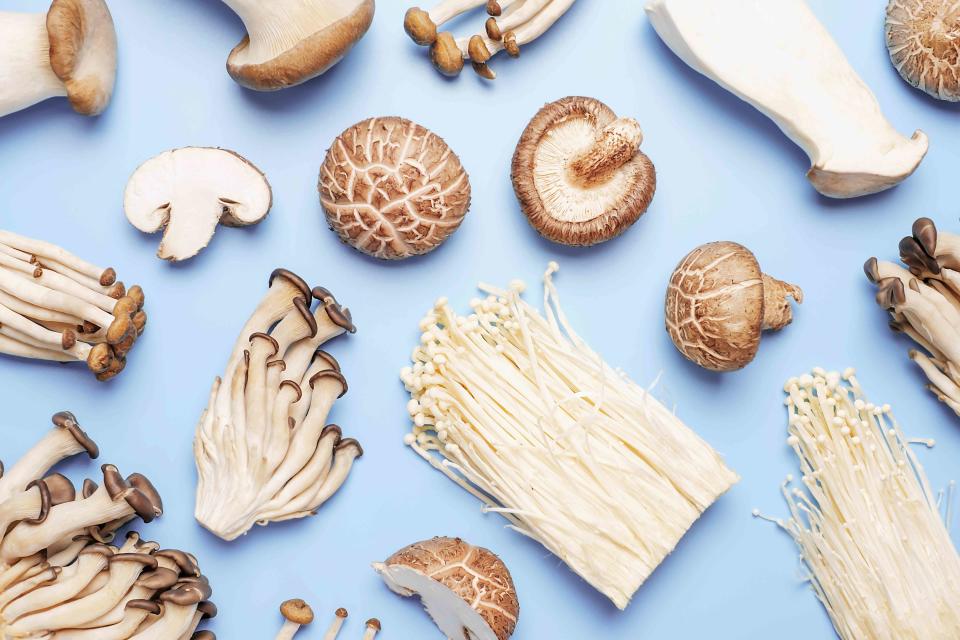
Tatiana/Getty Images
Not all inflammation is necessarily the enemy. When people talk about lowering inflammation in the body, they’re referring to the harmful type of inflammation, low-grade chronic inflammation, explains Janice Chow, MS, RD, registered dietitian and owner of nutrition counseling service The Mindful Chow.
Related: 10 Anti-Inflammatory Fruits Bursting With Antioxidants and Fiber
What Is Chronic Inflammation?
Unlike the helpful type of inflammation called acute inflammation, chronic inflammation (or systemic inflammation) doesn't resolve after a finite period of time. Acute inflammation assists your body in healing from things like wounds and infections, Chow explains. Whereas chronic inflammation lingers for a long time and can be triggered by various factors, such as existing, untreated disease, pollutants in the air, poor nutrition or sleep, and toxic stress. “The chronic inflammation that arises as a result of these triggers can create an environment for diseases to occur,” Chow says.
Anti-Inflammatory Nutrients
One way to help reduce this unwanted inflammation is to eat anti-inflammatory foods—foods that contain antioxidants and fiber, explains Chow, which support a healthy immune system, gut health, and more. These important nutrients are typically found most abundantly in plant foods, especially in colorful fruits and vegetables.
Related: How to Start Eating More Anti-Inflammatory Foods—and Why It's So Important
Antioxidants
Antioxidants help neutralize free radicals, which are unstable molecules that your body produces when consistently exposed to negative environmental triggers like alcohol consumption, air pollutants, and psychological stress, explains Annie Zappulla, BS, RDN, registered dietitian and owner of A to Z Wellness Solutions LLC.
“An excessive amount of these unstable molecules may cause longer term damage to our cells, and there are theories that this kind of cellular damage may lead to chronic diseases,” Chow says. Several vitamins, minerals and plant compounds called polyphenols and carotenoids all perform antioxidant functions in the body, she says.
Fiber
Research also suggests that fiber helps to decrease chronic inflammation in the body, says Chow. One way that fiber may do this is by supporting a gut pH level that decreases inflammatory molecules.
Related: These Foods are High in Flavonoids: Add Them to Your Grocery List ASAP
Anti-Inflammatory Vegetables to Eat on Repeat
There are many, many nutritious veggies that provide the anti-inflammatory compounds mentioned above. Here, Chow and Zappulla list eight types of vegetables that are especially high in anti-inflammatory compounds and that they recommend adding regularly to your diet to get their full, healthy benefits.
Cruciferous Vegetables
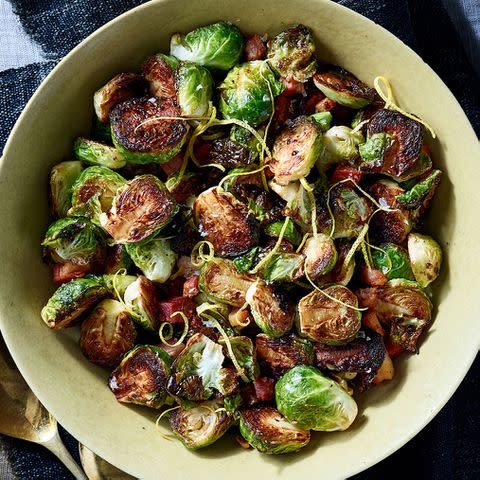
Roasted Brussels Sprouts With Pancetta
Cruciferous vegetables include kale, broccoli, bok choy, cabbages, Brussels sprouts, Swiss chard, watercress, collard greens, and cauliflower. They’re all rich in both fiber and antioxidants: vitamins C, E, and A, flavonoids, and, especially, a phytochemical (plant chemical) called sulforaphane, Chow says. Sulforaphane can help decrease inflammation by reducing the levels of inflammatory cytokines in the body, Zappulla explains.
Onions and Garlic
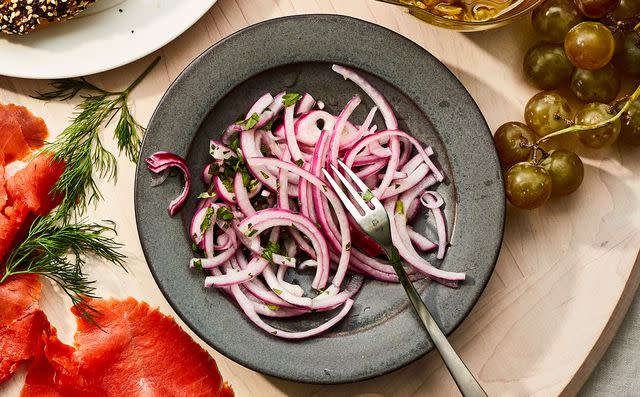
Many dishes would fall flat without the help of these aromatic bulbs. Thankfully, they’re more than just delicious; they’re very beneficial to human health. Not only are they good sources of fiber, onions and garlic provide antioxidants in the forms of vitamin C, vitamin A, and a polyphenol called phenolic acid, Chow says. “Garlic also contains sulfur components, which may reduce inflammation as well,” Zappulla adds.
Dark Leafy Greens
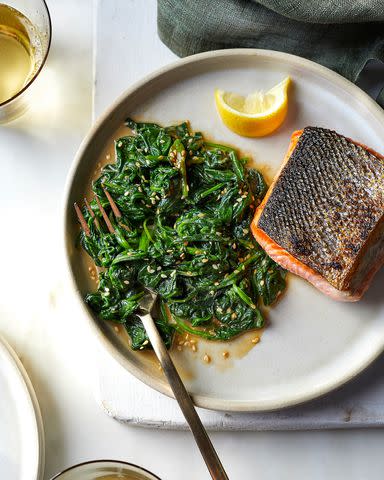
Dark leafy greens are extremely rich in fiber and antioxidants. According to Zappulla and Chow, the antioxidants they provide include vitamin C, vitamin A, carotenoids like lutein and beta-carotene, as well as polyphenols like quercetin. Say the phrase ‘dark leafy greens’ and chances are your mind instantly pictures spinach, kale, Swiss chard, or bok choy—and those are excellent picks. But Zappulla encourages venturing beyond these classic greens from time to time.
“Microgreens, which are the immature version of spinach, kale, or broccoli, actually contain 40 times more nutrients than their counterparts,” Zappulla points out. So why not sprinkle them over the top of your meal—like this superfood lentil bowl—for an aesthetically pleasing nutritional boost
Purple Corn
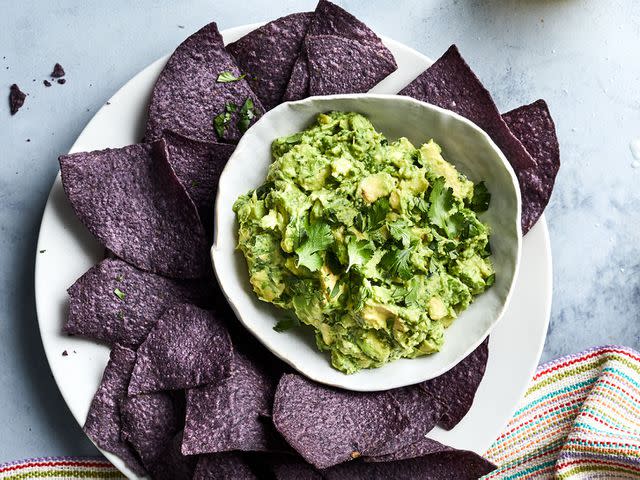
Easiest-Ever Homemade Guacamole With Purple Corn Chips
This veggie’s striking purple color comes from the polyphenol called anthocyanin, Chow says, and some studies demonstrate that this gives the purple corn additional antioxidant properties when compared to regular yellow corn. This variety of corn also houses other antioxidants like vitamin C, E, and B2 in each of its sweet and juicy kernels, which are also a great source of fiber.
Tomatoes
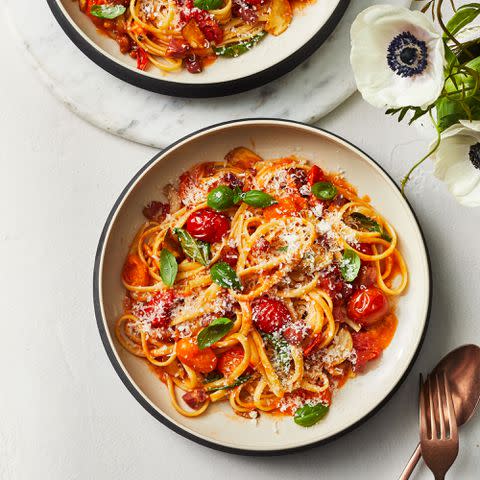
Linguine With Cherry Tomato Sauce
High in fiber and rich in antioxidants, tomatoes are a powerhouse vegetable (OK, technically they’re fruit!) used widely in cooking. “Tomatoes might be the only vegetable that has all three kinds of carotenoids, lycopene, both alpha and beta-carotenes, and lutein,” Chow says. They’re also high in vitamin C. Both Zappulla and Chow advise incorporating cooked tomatoes in your diet, as the lycopene becomes more available to be absorbed by the body when you cook the tomato in oil.
Peppers

CAITLIN BENSEL
“Any variety of peppers, whether bell peppers or chili peppers, are all great sources of the antioxidant vitamin C and [the polyphenol called] quercetin,” Zappulla says. “Red, green, orange, and yellow bell peppers also provide other antioxidants like vitamin E, B2, and the carotenoid called beta-carotene, and they’re high in fiber,” Chow adds.
Mushrooms
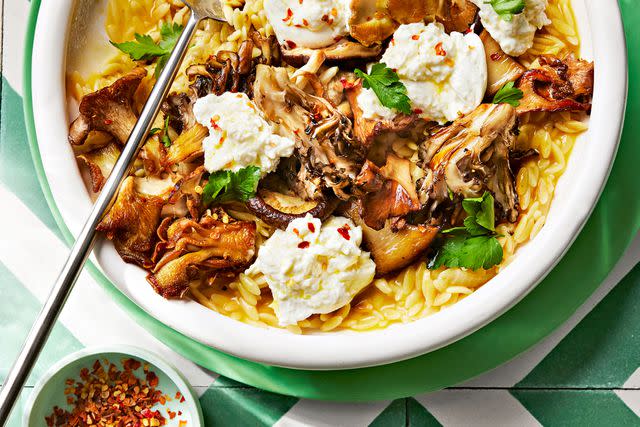
Greg DuPree
Whether portobello, shittake, or white button mushrooms, these edible fungi are packed with anti-inflammatory properties. According to Chow and Zappulla, they contain antioxidants like selenium, vitamins B2, B3 and polyphenols called phenolic acid and flavonoids. They are also high in fiber.
Chayote
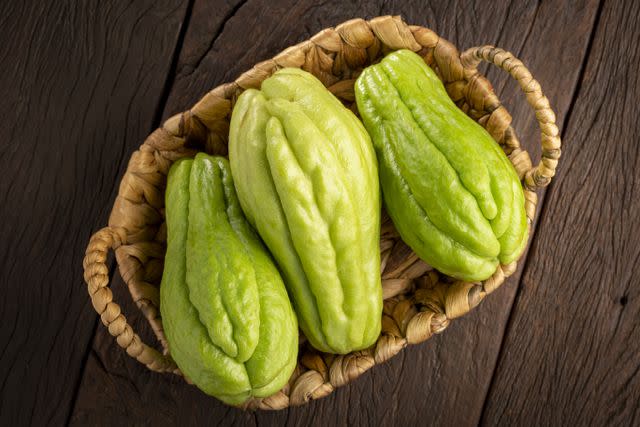
Getty Images
Chayote is used widely in the cuisines of Mexico, South America, and parts of Asia. This green, pear-shaped squash belongs to the gourd family and is a good source of fiber and antioxidants, like vitamin C, B2 and B3, and flavonoids, says Chow. You can eat it raw, cooked like other types of squash, and add it to recipes like this Guatemalan chicken and rice soup.
Related: 16 Best Fruits and Vegetables For Gut Health, According to RDs
For more Real Simple news, make sure to sign up for our newsletter!
Read the original article on Real Simple.


